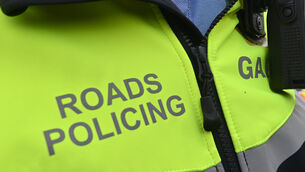McManus found guilty of Melissa Mahon manslaughter
A 44 year-old Sligo man has been found not guilty of the murder of 14 year-old Melissa Mahon, but guilty of her manslaughter.
A jury of six men and six women took nearly five and a half hours over three days to reach the verdict. Ronald McManus, also known as Ronnie Dunbar, was also found not guilty of threatening to kill one of his daughters – Samantha Conroy, a key prosecution witness.
McManus, of Rathbraughan Park, Sligo, had denied the murder and the threat to kill during the five-week trial. Mr Justice Barry White will sentence McManus on July 6, 2009.
Mr Justice White exempted the jury from further service for life and described this case as “distasteful, sordid and squalid”. He thanked it and said he was sure it had found the case difficult to determine.
The verdict was met with a muted reaction from everyone in the court room. Mary Mahon, the victim’s mother, quietly wiped away tears.
Defence counsel Brendan Grehan SC said that the issue of involuntary manslaughter may be raised at sentence in circumstances where the jury has found that McManus did not intend to kill Melissa Mahon or cause her serious injury.
Mr Justice White responded that the jury’s finding indicated that it was “not satisfied beyond a reasonable doubt that the accused intended to kill or cause serious injury”.
He asked prosecution counsel to provide assistance from the Director of Public Prosecutions in relation to sentences for manslaughter in circumstances similar to this case, the unlawful killing of a 14 year-old.
Mr Grehan said the accused wanted the court to proceed to sentence today without the benefit of reports. Sentence will be imposed by the Central Criminal Court on July 6.
The jury had heard that Melissa had gone missing from the care of the Health Service Executive on September 14, 2006. Her skeletal remains were recovered from the shore of Lough Gill in February 2008 after Samantha Conroy told gardaí that her father killed the girl and dumped the body.
The trial lasted for 25 days and the jury retired on day 23. It was sent home on Monday following the Judge’s charge and two and a half hours of deliberation.
On Tuesday the jury asked to again see video link evidence given by Samantha Conroy. A portion of her evidence was shown and it was then discovered that a malfunction with the recording equipment meant that another day’s evidence had not been recorded.
The jury was again sent home for the evening on Tuesday after more than one hour of deliberation. Joseph Barnes BL, defending, made an application to discharge the jury on Wednesday morning on the grounds that the Criminal Evidence Act 1992 stated that all video link evidence shall be recorded.
Mr Justice White agreed with the prosecution that the failure to video record a portion of the cross examination of Ms Conroy did not amount to failure to provide a fair trial.
Mr Justice White said the evidence had been recorded by the court’s digital audio recording system. The evidence and inquiries into how the video recording failed would be put on the transcript and would therefore be available if needed by the Court of Criminal Appeal.
He said that the jury was entitled to have its memory refreshed from the Judge’s note of the evidence or from the transcript but he was not aware of any authority which suggested that jurors were entitled to review the evidence.
An audio recording of the evidence was played for the jury which then resumed deliberations. Technician Liam Walsh told Mr Justice White in the absence of the jury that the recording equipment had appeared to the operator to be recording.
A malfunction had occurred where the machine recorded the wrong channel. The process for starting the recording was done too quickly and the system needed 10 seconds to log on to the right channel. This had never previously been experienced. Mr Walsh said the Courts’ Service would review its procedures as a result.
Just before 1 pm yesterday the jury indicated that it had not yet reached a verdict upon which all its members were agreed. Mr Justice White sent it to lunch and told it that he would give them the option of returning a majority verdict after lunch.
Just after 2pm, before Mr Justice White gave any further instruction, the jury returned a unanimous verdict of guilty of manslaughter.
Three of his daughters testified against him during the trial.
Two daughters said that in September 2006 they saw their father on a bed with Melissa with his arm around her neck before he tied her into a sleeping bag and dumped her body in the River Bonet.
A year and a half later, Samantha Conroy told her older sister Shirley what had happened to Melissa, and Shirley’s boyfriend contacted gardaí. In February 2008 Samantha led police to the spot where Melissa was dumped. Her skeletal remains were then found along the shore of Lough Gill.
Samantha Conroy, now aged 18, told the court via video link that she arrived home at 5pm on a Thursday in September and found her younger sister crying.
Samantha said she went upstairs and discovered her father in his bedroom lying on the bed with Melissa with his arm around her neck.
Samantha said that Melissa was her father’s girlfriend and Samantha left the room thinking they were up to something sexual but then burst back in and turned on the light. She said her father jumped off the bed and left the room leaving Melissa lying on her back gasping for air.
Samantha said she got on top of Melissa and attempted to resuscitate her but she was dead. She said McManus came back into the room with a sleeping bag and placed Melissa into it head first. Samantha said she could smell urine coming from the bag and that her father tied it shut with a blue neck tie.
He then carried the girl’s body downstairs and put it into the boot of his car. He told his two daughters to get into the car and drove them to a secluded area along the River Bonet, a 25-minute drive away.
Samantha said he got his daughters to help throw the body into the water and then he threw stones at it until it sank. She said he then brought her and her sister to his regular football practice in Collooney. She said he told them they were accessories to murder and threatened to do the same thing to them if they told anyone.
Melissa had run away from the care of the Health Service Executive on the morning of September 14, 2006. She had run away from her family home in early August 2006 and had spent a number of weeks hiding in the Dunbar house before going into care.
In 2005 she had become friendly at school with Dunbar’s daughters and had become close to Ronnie Dunbar. The court heard that he had his daughters with him at all times, even on a first date, and would often take them and Melissa for regular spins in his car.
Although Melissa was in the Dunbar house in August 2006, he told social workers and gardaí that he did not know where she was. He told his then girlfriend, Angelique Sheridan, that Melissa had been abused by her own family and that he was protecting her.
Dunbar arranged for Melissa to meet a social worker about going into care in late August. He orchestrated a meeting to appear as though he had not seen the girl for weeks. When Melissa did go into the care of the HSE she spent eight out of 16 nights missing from the home. Much of her time was spent with Dunbar.
Angelique Sheridan told the court that Dunbar told her he would kill Melissa by strangling her before he would go to prison over her. Ms Sheridan said Shirley Dunbar was present for that conversation but Shirley said that that was not the case.
The court also heard that Melissa had taken a pregnancy test in the presence of two friends in the toilets of a McDonalds in Sligo town. Her friends told the court that the test was positive and that Melissa was delighted.
On September 7, 2006 social workers involved with Melissa had become increasingly concerned by her relationship with Ronnie Dunbar and sought an order from Sligo District Court under the Child Care Act prohibiting contact between Melissa and Dunbar without the prior consent of the HSE.
The Central Criminal Court heard that Melissa was “quietly upset” by the court order which did little to resolve the situation. On September 13, 2006, following another incident in which Melissa had gone missing from the care home, she was taken to a foster family outside of Sligo.
Melissa ran away from that family in the middle of the night and appeared at the door of a stranger asking for her father, whom she said was Dunbar, to be contacted. Gardaí and a social worker arrived to collect her and she slept overnight at Manorhamilton garda station.
Catherine Farrelly, her social worker, took Melissa back into Sligo early the next morning and caught the girl talking to a male voice on her mobile phone when Ms Farrelly had stopped at a garage for breakfast. Mobile phone records indicated a number of calls and texts between Dunbar and the girl that morning.
In fact, more than 30% of Dunbar’s mobile phone calls or texts in the summer of 2006 were to or from the 14 year-old.
Ms Farrelly bought Melissa fresh clothes and then took her to her place of work at Markevich House. She left Melissa in the toilets to change and went to her office to make phone calls. That was the last she saw of Melissa.
The girl was spotted later that morning by two social workers from the care home who were driving towards Sligo town. They spotted Melissa heading towards the Rathbraughan estate. When they called out her name she began to run - in the direction of Ronnie Dunbar’s house.
When Samantha’s accusations came to light in February 2008, Dunbar’s youngest daughter, who cannot be named, denied that he was involved with Melissa’s death. She gave a number of different accounts in which she variously blamed Samantha, herself and her father.
In court the youngest, now aged 16, gave an account which was similar to Samantha’s but differed in a number of ways. She told the court via video link that her father had tied a neck tie around Melissa’s neck, placed a pillow over her face and strangled her with his hands.
Defence counsel described the accounts given as inherently incredible and said the two girls had not come across as “shrinking violets”.
They said that they were under the control of their father and were brainwashed by him. They explained difference in their accounts by saying that people had different perceptions of events and that they were young and terrified at the time.
The jury also heard bizarre evidence about Dunbar’s beliefs from two former girlfriends of the accused. Ruth Nooney, who had briefly been engaged to Dunbar in late 2007, said Dunbar believed that a new world was coming and that he would be a king leading troops on a battlefield. She said he would only take those with him that he could trust and kept fit at the gym in order to be ready.
Ms Sheridan told the court that Melissa Mahon told her that she was the reincarnation of Cleopatra and had been married to Dunbar in a former life. The child told Ms Sheridan that she would be with Dunbar in the new world. There was also evidence given about the girls believing that Dunbar was a demon fighter.
McManus was originally called Dunbar but changed his name when he was placed in the witness protection programme in the UK. The court heard that he and Shirley were shot by a drug dealer and then placed in the programme after giving evidence.
He took his mother’s maiden name of McManus and moved to Scotland before returning to Ireland.












